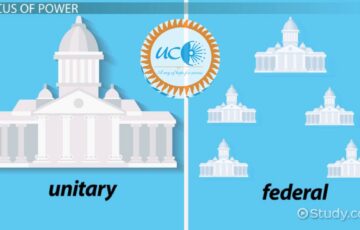Census as a mirror of past and present
Census:
- The census offers details on the population’s size, distribution, socioeconomic status, demographics, and other factors.
- Under British Viceroy Lord Mayo, the Census was first conducted in 1872.
- It aided in developing new regulations and government initiatives to enhance community improvement areas.
- In India, the first synchronised census took place in 1881.
- Since then, censuses have been conducted once every ten years without interruption.
Who conducts the census?
- The Office of the Registrar General and Census Commissioner, India, which is part of the Ministry of Home Affairs, is in charge of carrying out the census every ten years.
The Census is one of the most credible sources of information on the following:
- Economic Activity.
- Literacy and Education.
- Housing & Household Amenities.
- Urbanization, Fertility, and Mortality.
- Scheduled Castes and Scheduled Tribes.
Census in India:
- India’s first Census was held in 1872, conducted non-synchronously in different parts of the country.
- After that, India has held its decadal censuses regularly from 1881 to 2011.
Method used by Dylan Sullivan and Jason Hickel:
- The difference between actual fatalities and those that may be anticipated based on some benchmark is used to compute excess mortality.
- For actual deaths, they used Census data.
- They compared mortality rates based on two different time periods: England in the 16th and 17th centuries and India in 1880.
Analysis of their studies:
- The resulting estimates for excess deaths during 1880-1920 are 50 million in the first case and 160 million in the second one, respectively.
- Death from famine: They point out that the figure is greater than the death from famine in “the Soviet Union, Maoist China, North Korea, Pol Pot’s Cambodia, and Mengistu’s Ethiopia”.
Issues with their studies:
- The age-wise population distribution in the census has been used to estimate the mortality rate
- Sullivan and Hickel use this to draw conclusions about the evolution of economic conditions in colonial India.
- The mortality rate itself is the result of estimation and not enumeration.
- Registration of births and deaths became established practice in India only much later on.
- The mortality rate in British India is seen to rise steadily after 1881: recording an increase of close to 20% by 1921.
- It is unusual for the mortality rate of a country to rise continuously due to natural causes.
- Sullivan-Hickel study vindicates Dadabhai Naoroji’s claim of the economic drain of India under British rule.
British arguments used for the empire:
- English forms of land tenure
- English language
- Banking
- The common law
- Protestantism
- Team sports
- The limited state
- Representative assemblies
- Idea of liberty
Issues with the British arguments for empire:
- There is no mention of:
- Famines that began virtually as soon as the East India Company began to dominate Bengal
- India’s deindustrialization in the 19th century
- Food security is being worsened by the wealth drain.
- Peasants in India were compelled to cultivate commercial crops for export in order for Britain to balance its commerce.
Importance of Census:
- Counting: It holds the promise of compiling a complete list of all Indians.
- During a census, the state is connected to every person, making it difficult for the state to hide or avoid the data.
- Findings: Information of a different order can be obtained by determining one’s age, gender, economic situation, religion, and native language.
- Organizing and problem-solving: It is a gold mine of information that offers directions for planning, dealing with issues, and making improvements.
- Prior to Big Data Before the term “Big Data” became widely used, — had consistently offered a large number of trustworthy statistics.
- Important metrics: such as the sharp decline in the gender ratio(between the Censuses of 1961 and 1971) alerted Indians to how pre and post-natal factors were reflecting the ‘son bias’ and leading people to murder girls, born and unborn.
- Preventing bigotry and prejudice: Considering the data-free assertion that India is heading for a population explosion due to Muslim reproductive rates.
Way Forward
- The mortality rate is declining, which indicates that living circumstances have improved.
- According to the Census, Indians’ life expectancy at birth increased more in the 1950s than it had in the seventy years before.
- In the hands of nationalists, a census can be a double-edged blade because it shows that Indians’ quality of life has improved since colonial authority ended in ways other than just their money.
- According to the Census of India, other than in a few isolated regions of the nation, we have never reached that level in recorded history.
- Expectancy of life: It began slowly increasing in 1991 after falling for 40 years starting in 1951.
- However, it was still lower in 2011 than it was in 1951.
- So, even though life expectancy increased soon after Independence, in the early years, it increased faster for men than it did for women.
- India’s Vasudhaiva Kutumbakam at the G-20: implying that the nations of the world are a family
- It behooves us to ensure that all the persons in our own family enjoy the same freedoms.
- Complete data repository: The census is essential and priceless because it serves as a storehouse for all available information about the nation. This information is collected in an open, voluntary, and financially supported manner, making the census a social good.
- Desire to connect: Fundamentally, it is a way in which the state, by knocking at all doors, displays its desire to connect with the people who ultimately comprise the nation.
Mains
- Discuss the main objectives of Population Education and point out the measures to achieve them in India in detail.(UPSC 2021) (200 WORDS, 10 MARKS)







